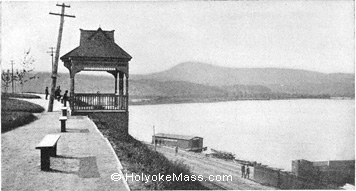Prospect Park
forces and occupied the town that night, sending forth scouting parties in many directions to discover the whereabouts of the Indians. From an old squaw who was captured it was learned that the Indians, numbering about 600, encamped about six miles northeast of Springfield Centre, at which point were found twenty-four fires, but no Indians, for they had departed the region never to return.
Grief and gloom settled down upon the little settlement. Houseless, penniless, grist mills and saw mills swept away, with the liability of further attacks from lurking savages, many were moved to despair of the settlement and contemplate its abandonment; but positive orders from the General Court to all of the settlements induced the settlers to resume their callings and re-establish their homes. The war, which resulted in the loss of six hundred Englishmen and six hundred houses, a much larger although unknown number of Indians, the expulsion of the tribes to Canada or the West, and the death of Philip in 1676, was concluded by treaty of peace in the spring of 1678, from which time forward Springfield had a prosperous career. Inhabitants swarmed southward and northward on both sides of the Connecticut, forming social and commercial centres, according to convenience of worship, government or trade, and at length asking from the General Court the decree of separation. Thus

The Second Level Canal.
© Laurel O'Donnell 1998 - 2006, all rights reserved
This document is an edited adaptation of the original publication and
may be downloaded for personal non-commercial use only.
These pages should not be reproduced or distributed in any format without permission.
|


